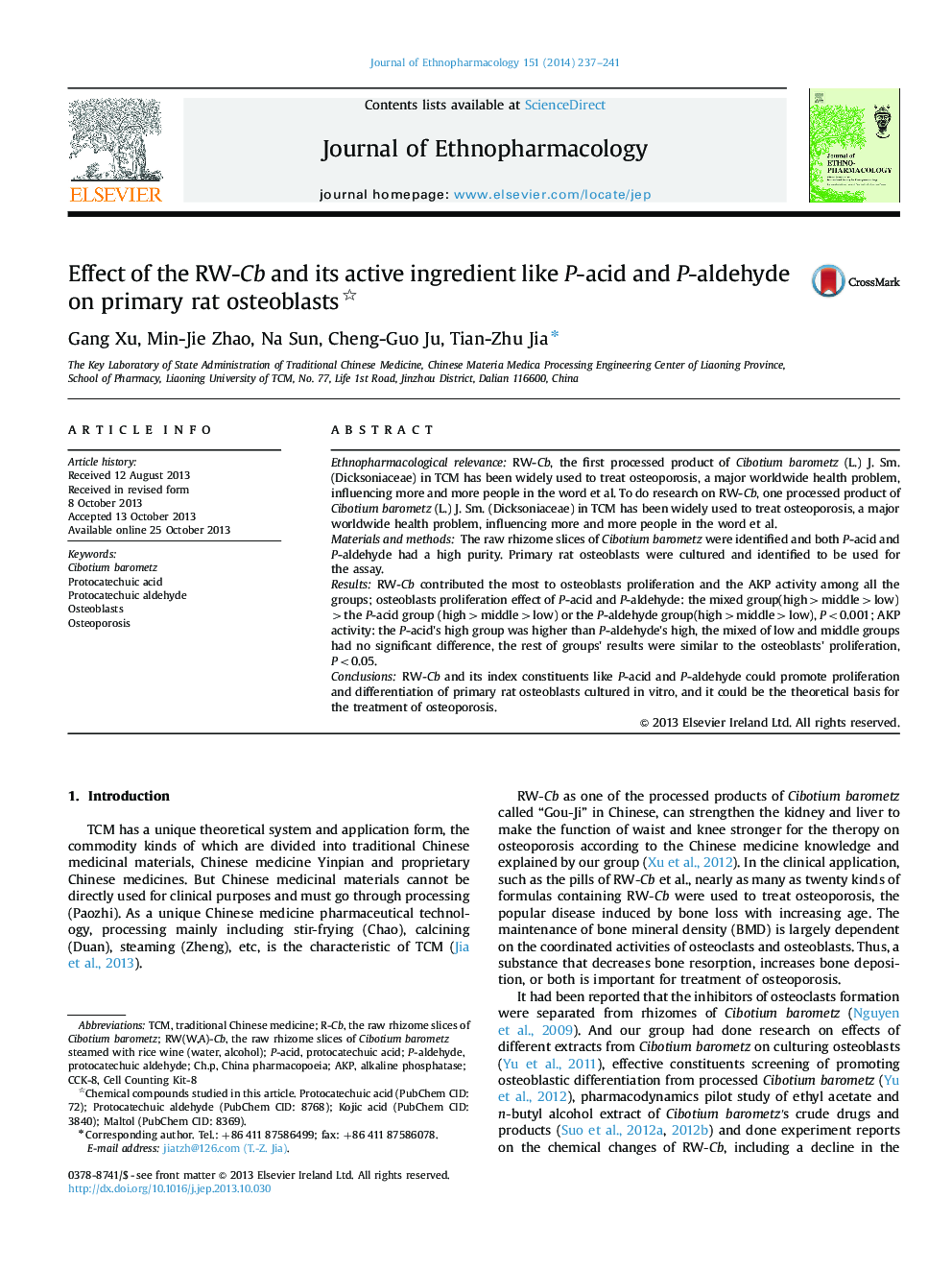| Article ID | Journal | Published Year | Pages | File Type |
|---|---|---|---|---|
| 5836779 | Journal of Ethnopharmacology | 2014 | 5 Pages |
Ethnopharmacological relevanceRW-Cb, the first processed product of Cibotium barometz (L.) J. Sm. (Dicksoniaceae) in TCM has been widely used to treat osteoporosis, a major worldwide health problem, influencing more and more people in the word et al. To do research on RW-Cb, one processed product of Cibotium barometz (L.) J. Sm. (Dicksoniaceae) in TCM has been widely used to treat osteoporosis, a major worldwide health problem, influencing more and more people in the word et al.Materials and methodsThe raw rhizome slices of Cibotium barometz were identified and both P-acid and P-aldehyde had a high purity. Primary rat osteoblasts were cultured and identified to be used for the assay.ResultsRW-Cb contributed the most to osteoblasts proliferation and the AKP activity among all the groups; osteoblasts proliferation effect of P-acid and P-aldehyde: the mixed group(high>middle>low)>the P-acid group (high>middle>low) or the P-aldehyde group(high>middle>low), P<0.001; AKP activity: the P-acid's high group was higher than P-aldehyde's high, the mixed of low and middle groups had no significant difference, the rest of groups' results were similar to the osteoblasts' proliferation, P<0.05.ConclusionsRW-Cb and its index constituents like P-acid and P-aldehyde could promote proliferation and differentiation of primary rat osteoblasts cultured in vitro, and it could be the theoretical basis for the treatment of osteoporosis.
Graphical abstractPhotos of osteoblasts (Ã100) (dyed by AKP of the third generation).Download high-res image (226KB)Download full-size image
